Social media for nonprofits often seems complicated to do.
The questions most NGOs and social media managers are confronted with are how to raise awareness for the cause, how to help people who need your services find you, and how to keep people who already support you, engaged with you.
In this article, we are going to uncover the benefits of social media for nonprofits, the best channels to start a nonprofit social media campaign, tools, strategies, and tips from industry professionals who specialize in social media marketing for nonprofits.
Let's dig in!
The 2024 guide to social media best practices for nonprofits
1. Why is social media important for nonprofits?
2. Which social media platforms are best for nonprofits
3. 7 Social media strategies for nonprofits
4. Social media tools for nonprofits
5. FAQs about social media for NGOs
Why social media is important for nonprofits
Social media marketing for nonprofits is the path to broadcasting the message to a wider circle, amplifying the NGO’s voice, and creating an engaged community of supporters.
But let’s break them down.
Here are 5 reasons why social media is important for nonprofits:
1. Building a community of advocates
Social media and nonprofits go together like engaging content and passionate individuals ready to support a cause.
NGOs can share stories, successes, and even the occasional meme, to connect with their audience. This will foster a sense of belonging among supporters, turning casual likers into staunch advocates and even volunteers.
Creating community-oriented content, not only amplifies your message but also provides a feedback loop that can shape future campaigns.
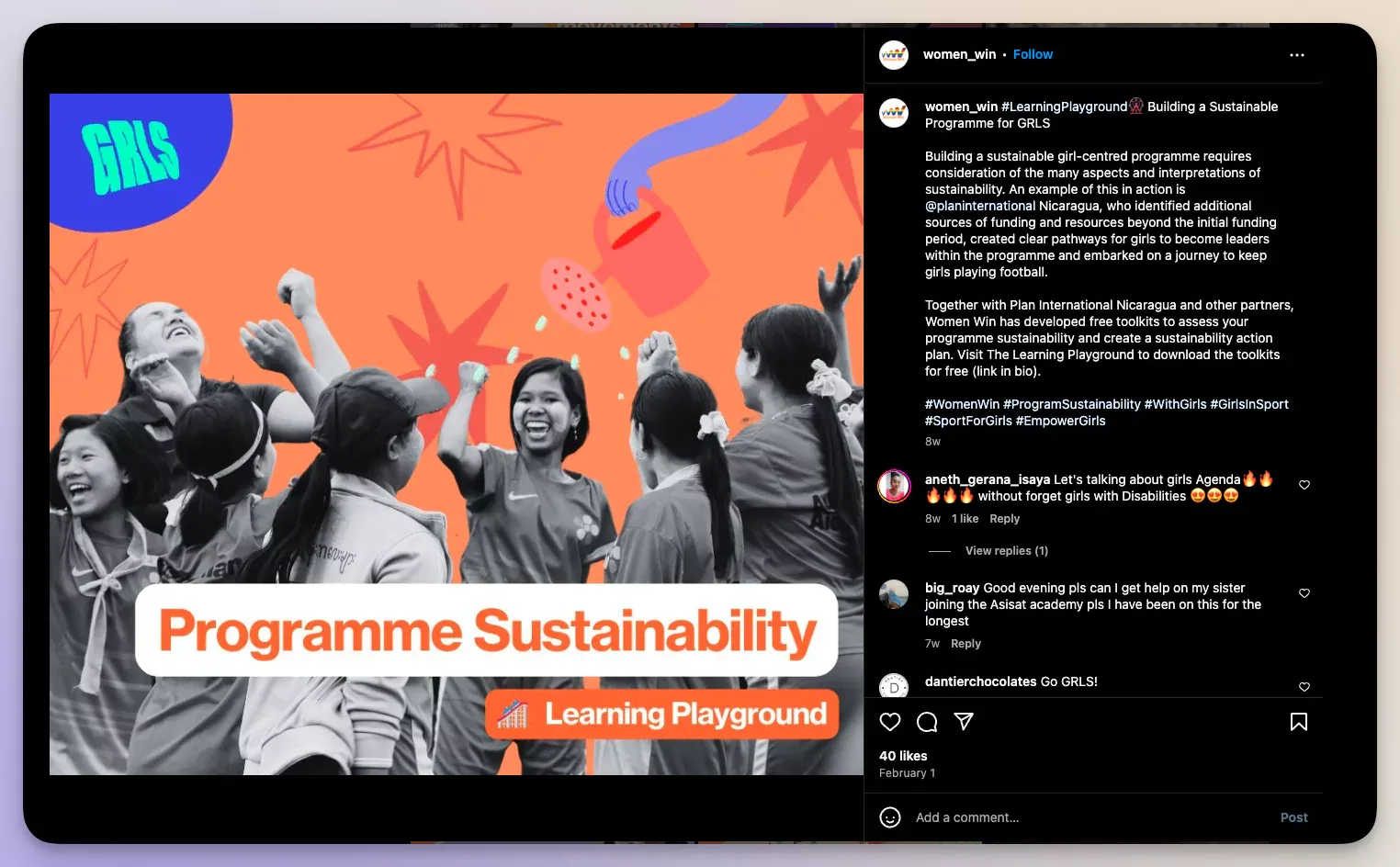
2. Using social media as a cost-effective megaphone
Let's face it, nonprofits are not known for ideal marketing budgets, and when it comes to saving the world, every penny counts. Leveraging social media platforms is the most cost-effective way to get your message across.
Make sure to include details and donation links in all the accounts bios, and stories.
With the right social media strategy, a small investment in social media advertising can yield a high return in terms of visibility and engagement, making it an essential tool in the nonprofit arsenal.
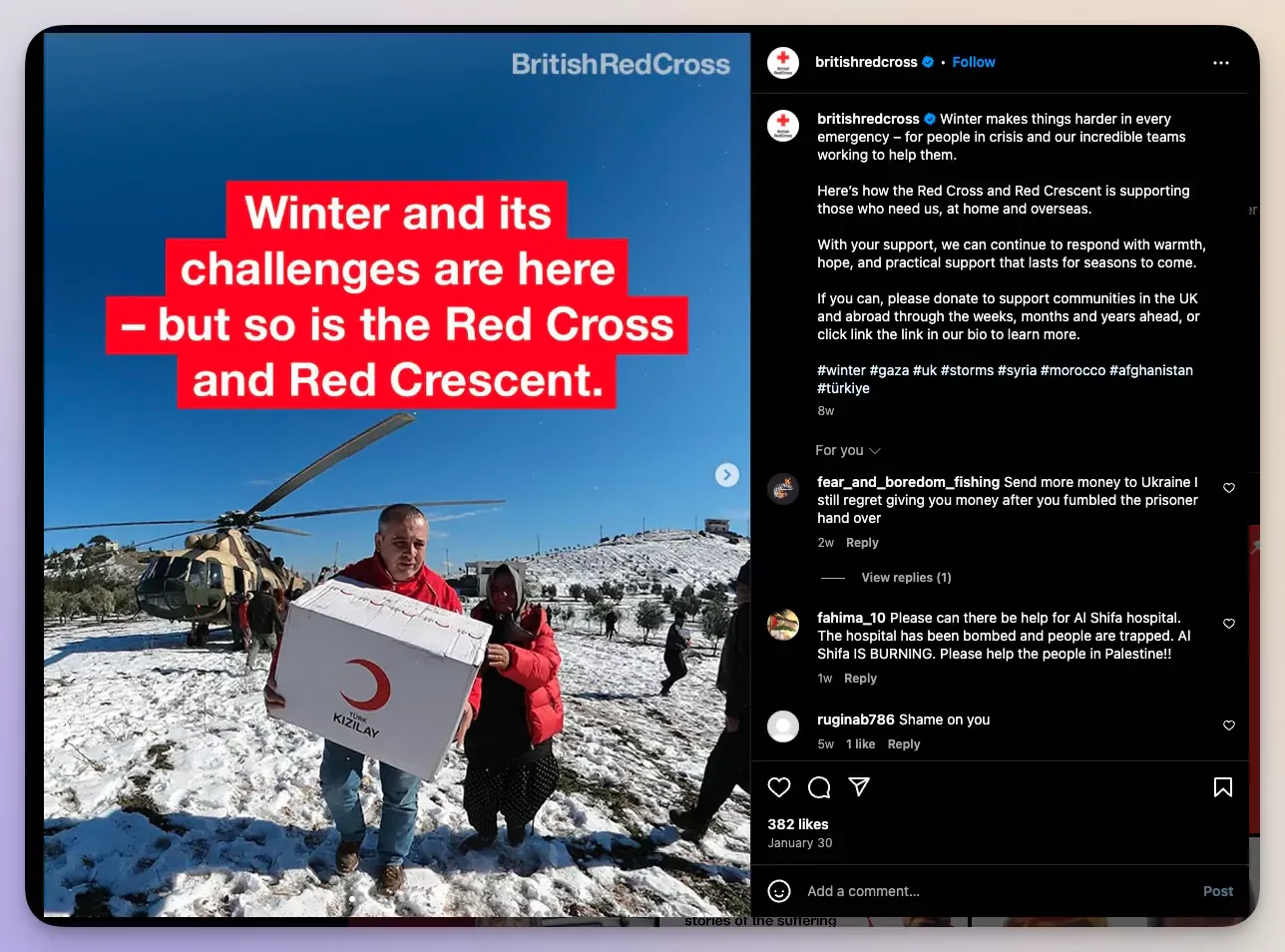
3. Real-time engagement with donors and volunteers
Social media for charities is like an open forum to engage with donors and volunteers in real time, fostering transparency and trust.
This two-way communication allows for immediate feedback, acknowledgment of contributions, and, most importantly, the ability to share the impact of donations directly with those who made them.
Based on our latest social media benchmarks report, non-governmental organizations (NGOs) are the most engaging category on Instagram compared with Facebook or Twitter.
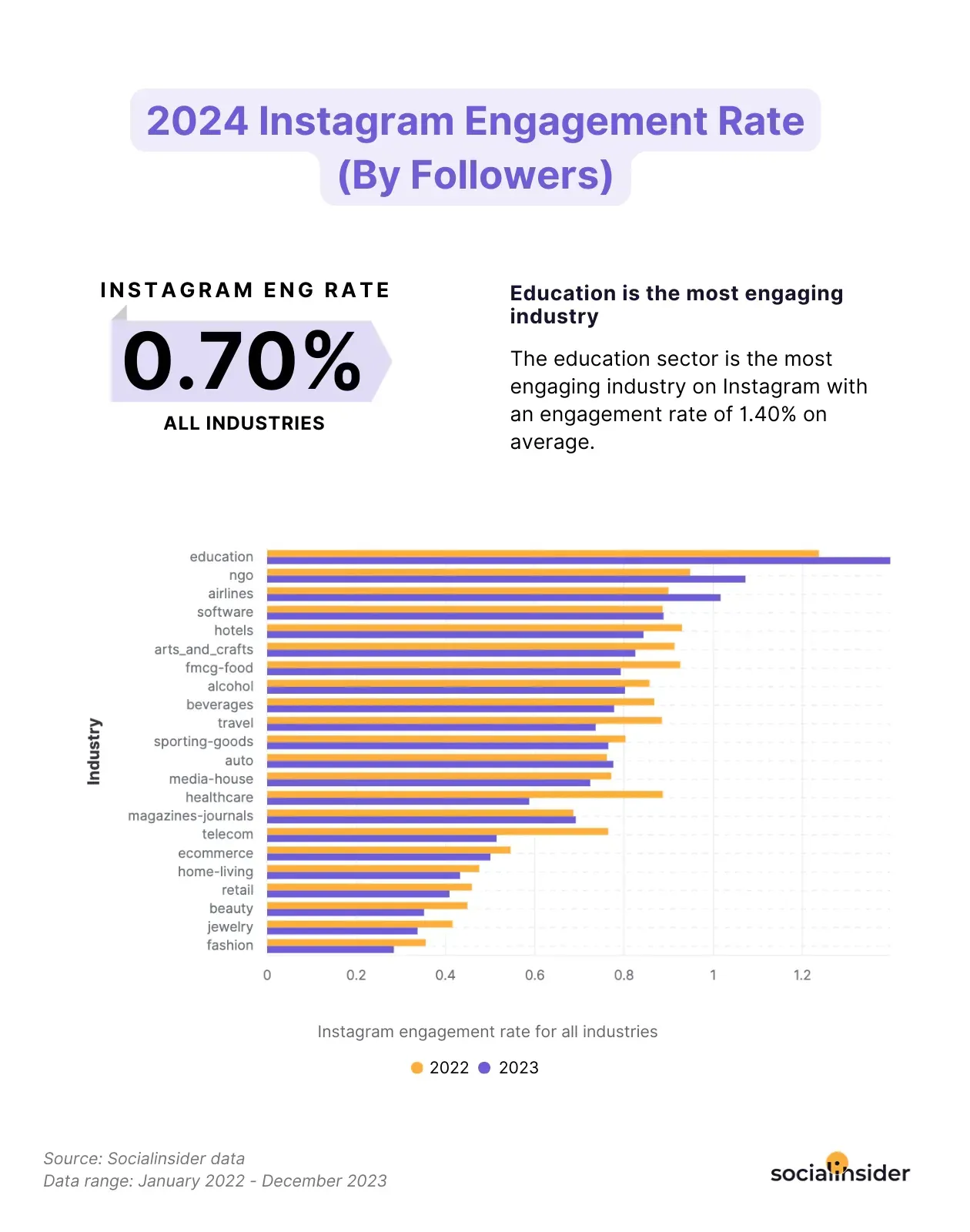
4. Boosting visibility through storytelling
What better way to cut through the information overload, than using storytelling to stand out?
Backed up by a well-thought-out social media strategy for nonprofits, audiences can emotionally connect with the mission, helping it to come to life.
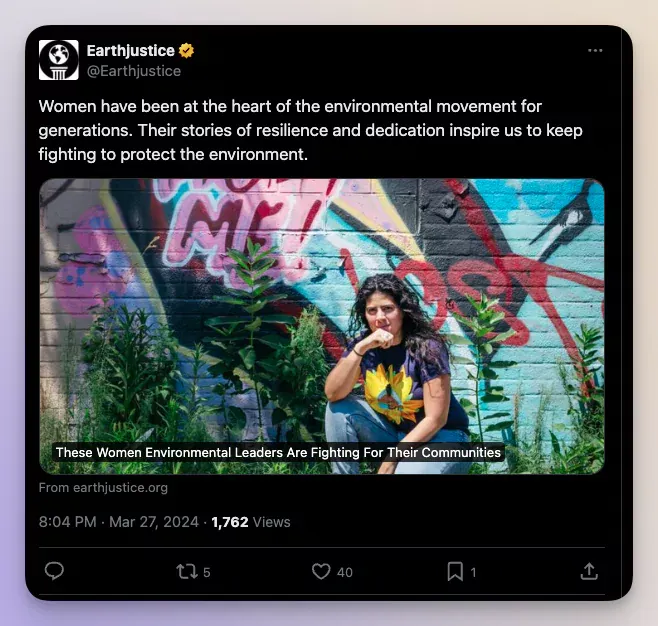
5. Leveraging the viral potential of social media platforms
Social media offers nonprofits the potential to launch campaigns that can quickly gain traction and reach a global audience.
Whether it's a hashtag challenge, a compelling video, or a share-worthy infographic, the viral nature of social media can catapult a nonprofit's cause into the spotlight.
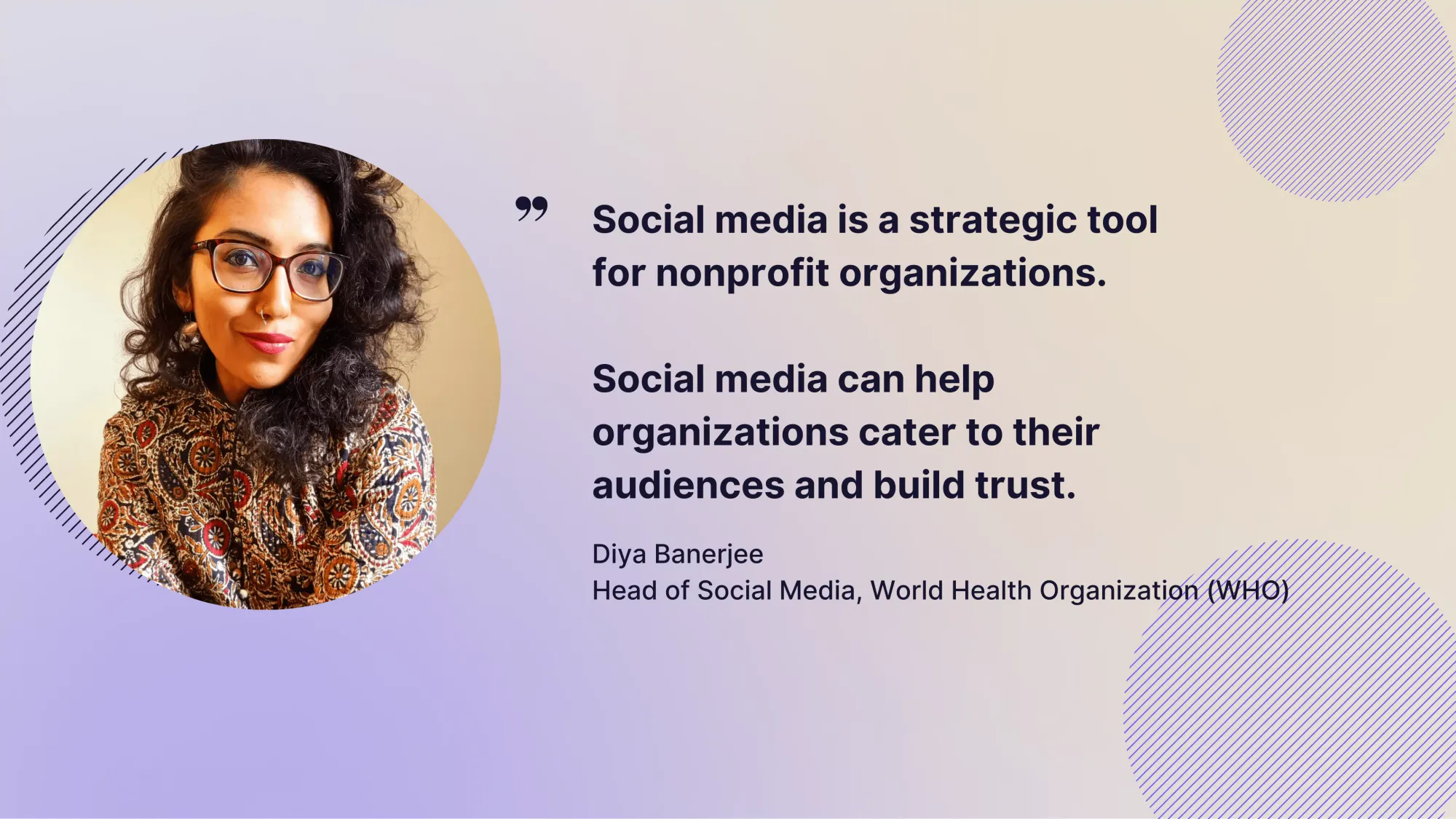
In one of our episodes of “The Life of a Social Media Manager” podcast, we talked to Diya Banerjee, Head of Social Media for the World Health Organization (WHO), about social media marketing best practices for nonprofits, focusing on Instagram and TikTok, about why shareability is the key to social media success, and how to make an exciting copy for a 45-second video.
You can listen to the podcast on Spotify or watch it on Youtube.
Social media is a strategic tool. It can help organizations cater to their audiences and build trust. Today, the World Health Organization (WHO) has a following of over 73 million across its social media channels, and this is so because we have harnessed the power of social media to deliver timely public health advice, information, content, and stories. In today’s digital environment, young people are consuming news and health information through social networks. Also, there are over 5 billion social media users today. That is a sizeable chunk of the global population that’s online and engaged. Investing in a sound social media strategy can turbo-charge organizational visibility, relevance, and impact. - said Diya Banerjee, Head of Social Media, World Health Organization (WHO)
Which social media platforms are best for nonprofits
When starting with a social media strategy for NGOs it is easy to fall into the trap of being present on every big social media platform.
The truth is, just as with any other brand, it is important to be present, where your audience is active.
However, some social media platforms have more impact on donors.
For example, the 2020 Global Trends in Giving Report shows that in Canada and The United States, 56% of donors say Facebook has the most impact, followed by Instagram with 21%.
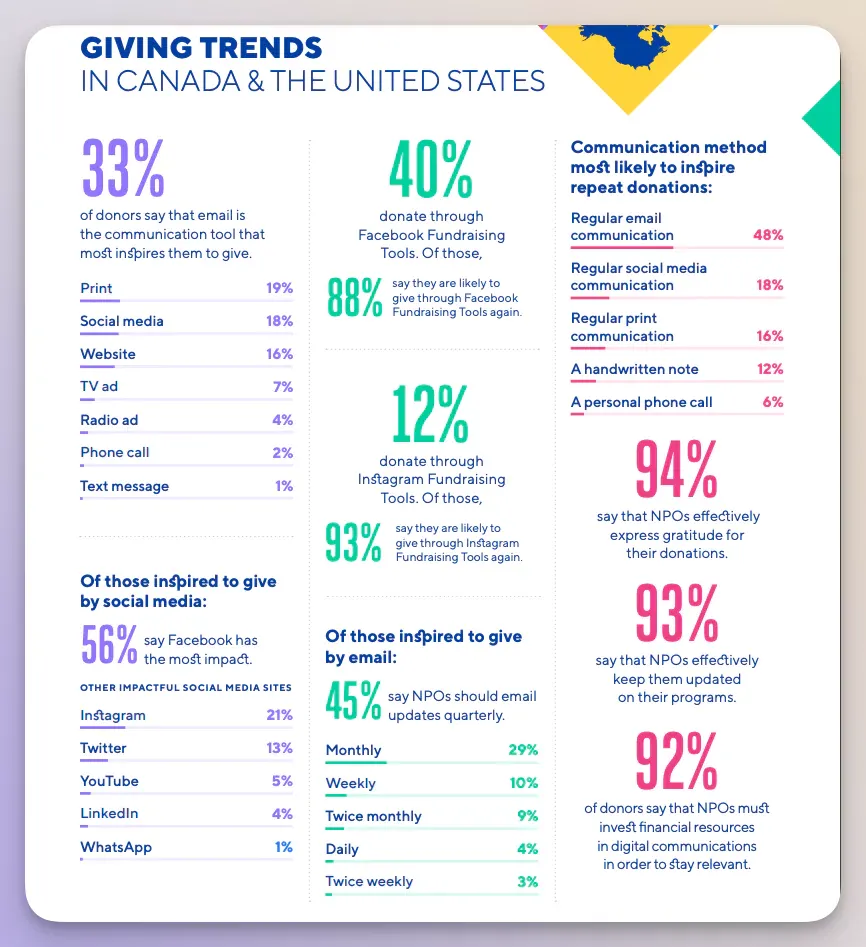
Facebook is a great tool for nonprofit social media marketing, due to its high visibility, and sharing options, but also due to its donation optimization, specifically the Facebook fundraising tools.
Instagram is also a viable option because of the powerful visual storytelling, interactive features, and direct donation options like donation stickers and buttons for stories and profiles, allowing NGOs to collect donations directly through the platform.
7 social media strategies for nonprofits
Social media marketing can be leveraged by NGOs not only to fundraise but also to inform the public, create shareable stories, and build cause awareness.
To do so, here are some social media strategies and tips to get you started:
1. Establish your objectives
Your number one priority when starting a nonprofit social media strategy is to establish your objectives.
Is it fundraising, awareness, gathering volunteers, or community engagement and advocacy?
Once these objectives are established, you can create a more clear, long-term marketing strategy for the nonprofit organizations, and use them as the backbone of your future campaigns.
2. Define your target audience
Before crafting content or launching campaigns, it's crucial to identify and understand your target audience. Analyze the demographics, interests, behaviors, and motivations of the people you want to reach.
Conduct audience research through surveys, social media analytics, or user personas to gain insights into your audience's preferences and pain points.
Tailor your content and messaging to resonate with your target audience, addressing their needs and aspirations effectively. Audience segmentation is extremely helpful in this case.
3. Adapt the social media strategy across multiple channels
Not all social media platforms support the same content format, not to mention their different algorithm particularities and audiences.
For example, a short-form video on Instagram, in the form of a reel, may not perform the same way it does if published on TikTok.
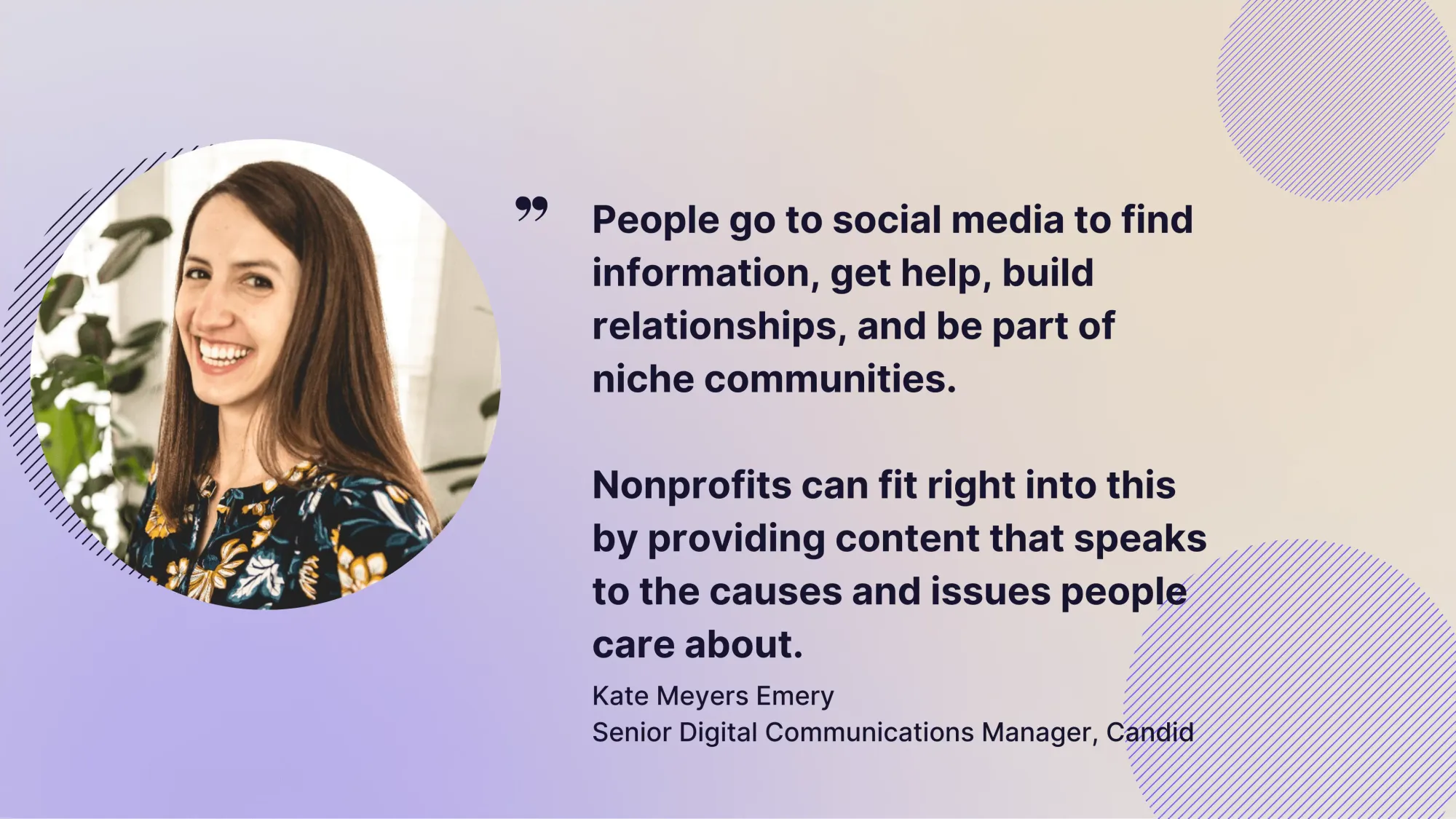
Here’s how the World Health Organisation tackles the same subject, but in different content formats and with different approaches on Instagram and TikTok.
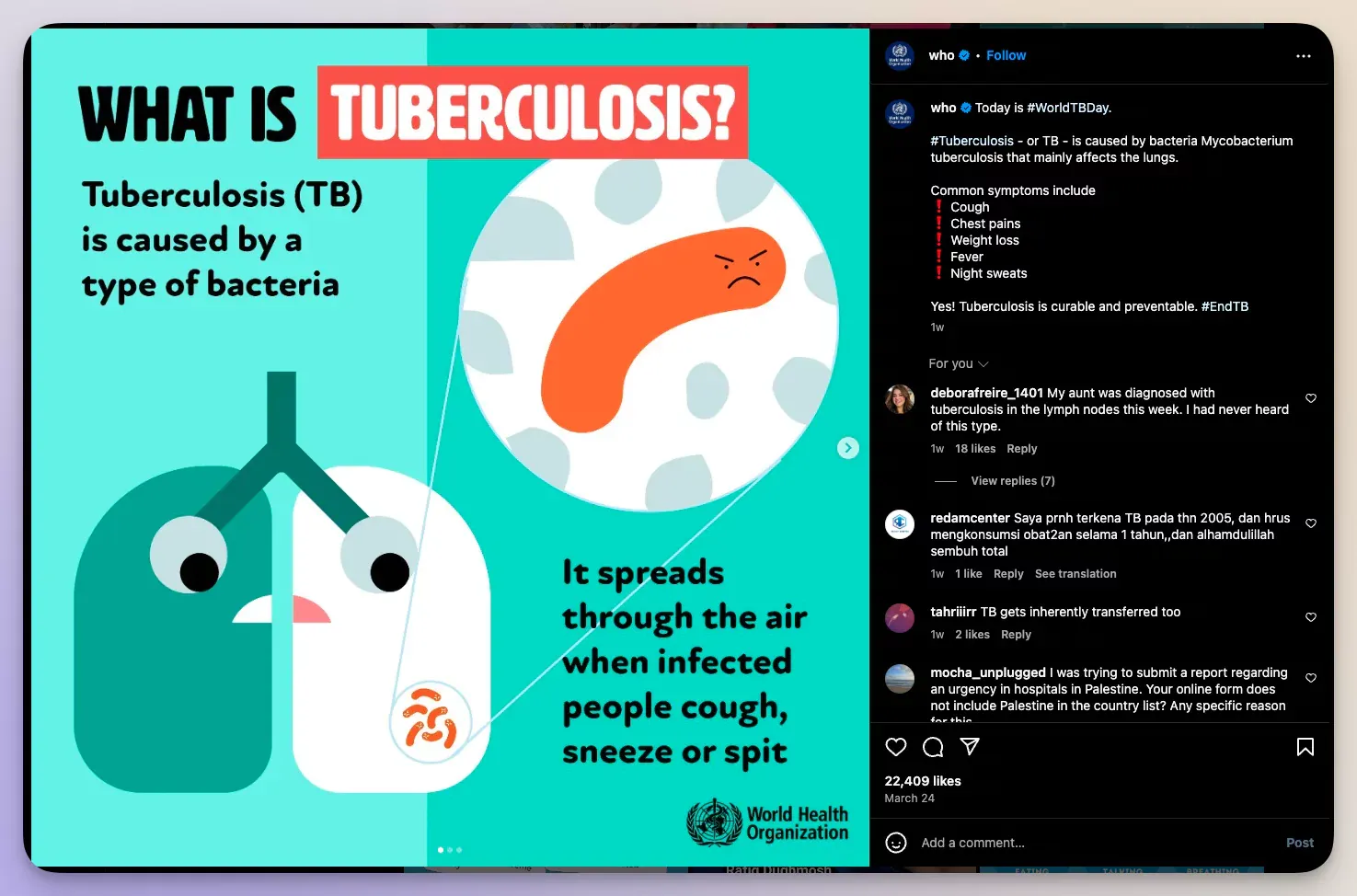
And here's the Tiktok post:
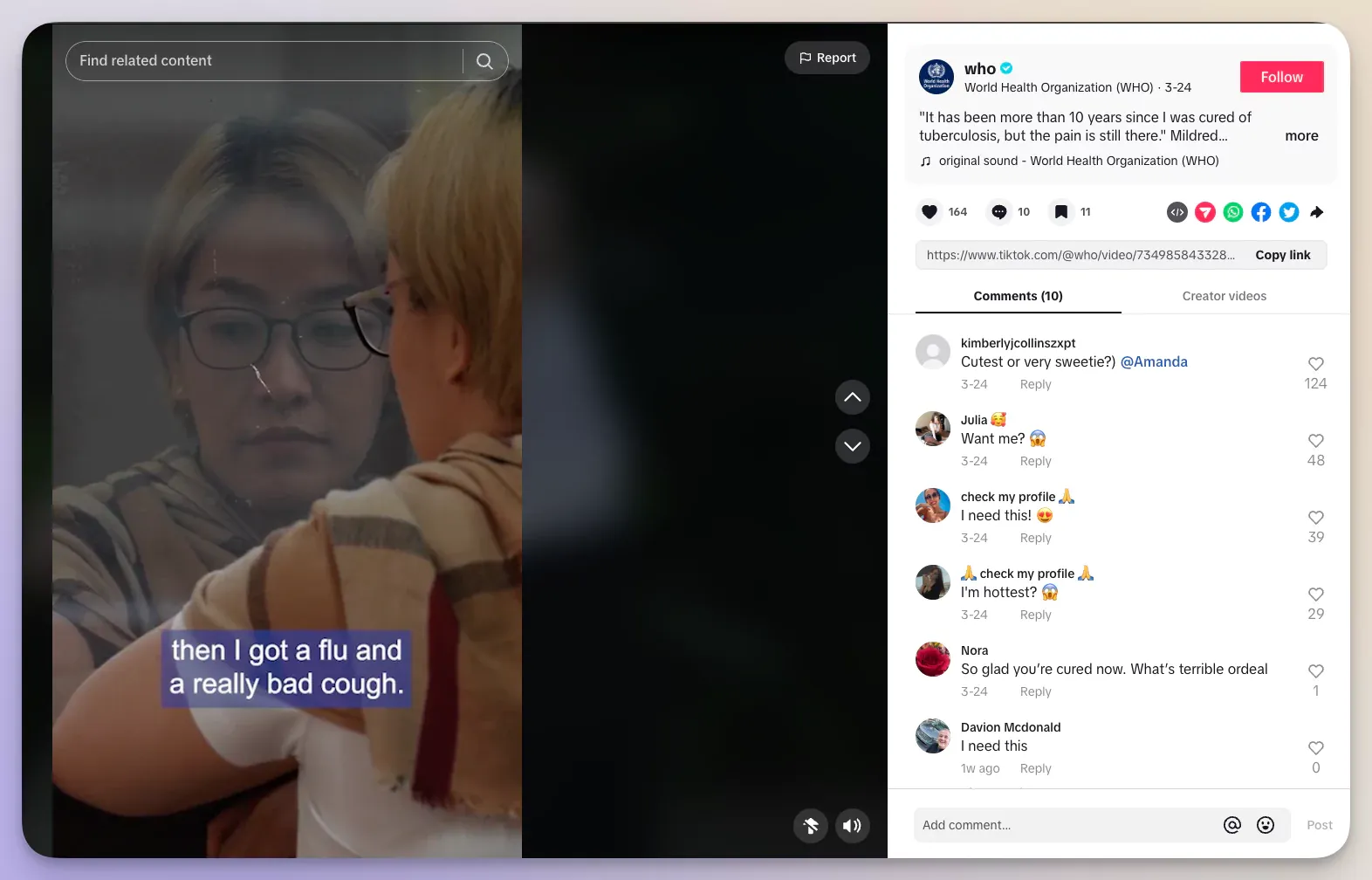
When crafting your nonprofit social media strategy, try to be as platform-specific as possible.
Most adults use some, if not multiple, types of social media platforms, and increasingly these channels are replacing traditional search engines like Google. People go to social media to find information, get help, build relationships, and be part of niche communities. Nonprofits can fit right into this by providing content that speaks to the causes and issues people care about. While you can leverage social media to promote your nonprofit and get donations, you’ll have a greater impact by using these platforms to build an educated and engaged community around their cause and mission. - said Kate Meyers Emery, Senior Digital Communications Manager, Candid.
4. Focus on the user
Social media strategies for nonprofits are not that different from a brand’s strategy.
Although your main objective is fundraising for your nonprofit, your focus on social media should be to address the needs or concerns of the user. This is easily done with a little bit of social listening.
5. Track social media performance
The best way to monitor the success of a social media campaign, or which content format performs better is through social media analysis and reporting.
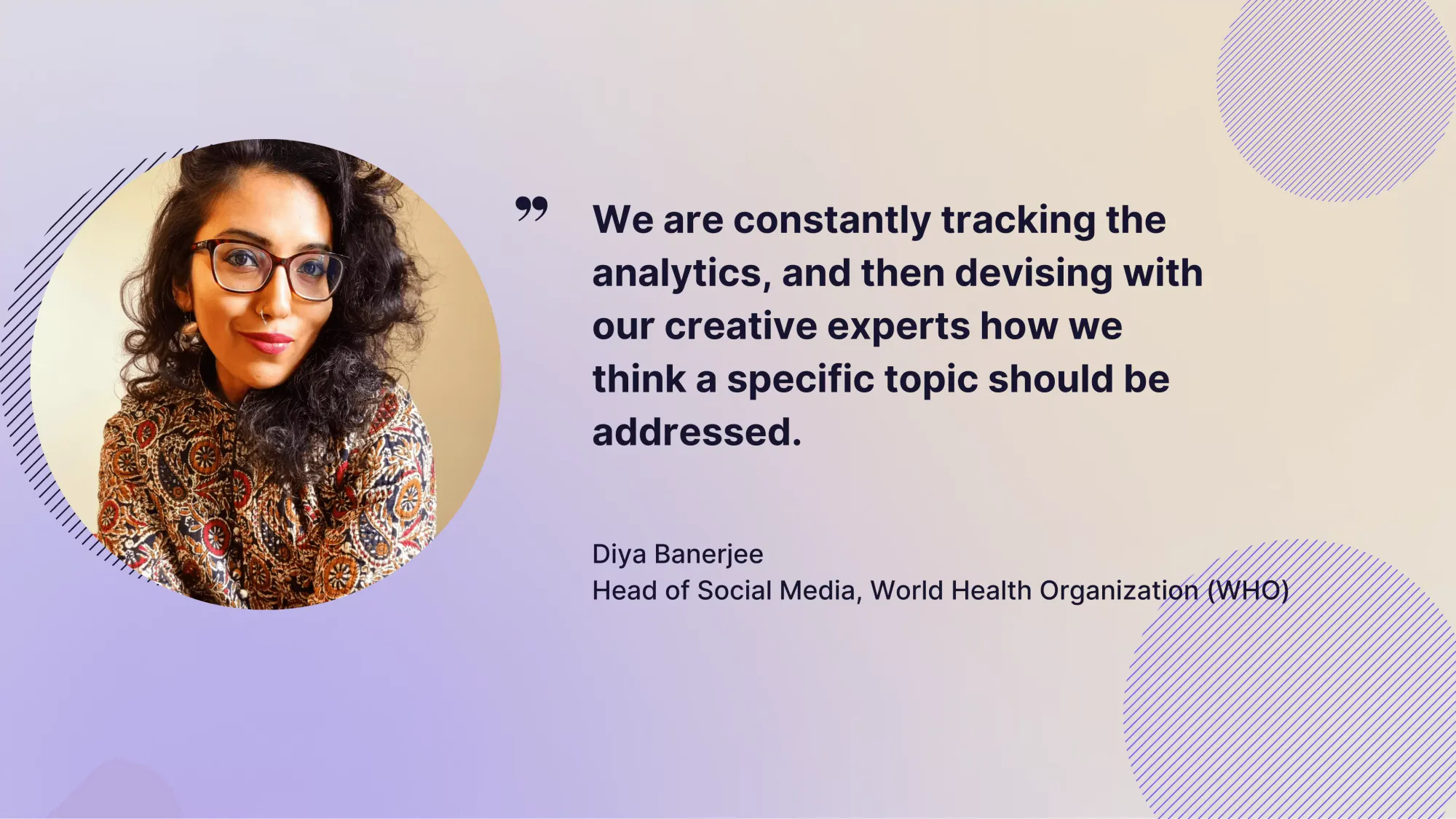
Just like with any other brand, social media reports for nonprofits are essential in understanding your audience, the platforms, and the direction of your NGO’s future social media marketing endeavors.
We are experimenting a lot more to understand whether it’s a carousel, a static image, a short-format 9:15 video that’s doing well, we are constantly tracking the analytics, and then devising with our creative experts how we think a specific topic should be addressed. So I think that a constant collaboration, keeping your eyes peeled at what the analytics tell you has helped us shape our Instagram engagement and drive it forward. - said Diya Banerjee, Head of Social Media, World Health Organization (WHO).
6. Break down information
Try to find the best way to create content that is easy to digest for your audience.
Use numbers, facts, and statistics to back up your claims, and create trust.
Incorporate visual elements such as infographics, charts, and graphs to present complex information in a more engaging and accessible format.
Keep your messaging clear, concise, and focused on key points to avoid overwhelming your audience. Feel free to experiment with different content formats such as short videos, slideshows, or interactive quizzes to cater to diverse learning styles and preferences.
7. Join forces with influencers
Find creators and influencers who can help you spread the message around.
Identify influencers who are passionate about causes similar to yours and have an engaged and authentic following.
Reach out, and offer them opportunities to create content or participate in campaigns that showcase their support for your organization while also resonating with their audience. Remember to keep them close, by cultivating long-term relationships.
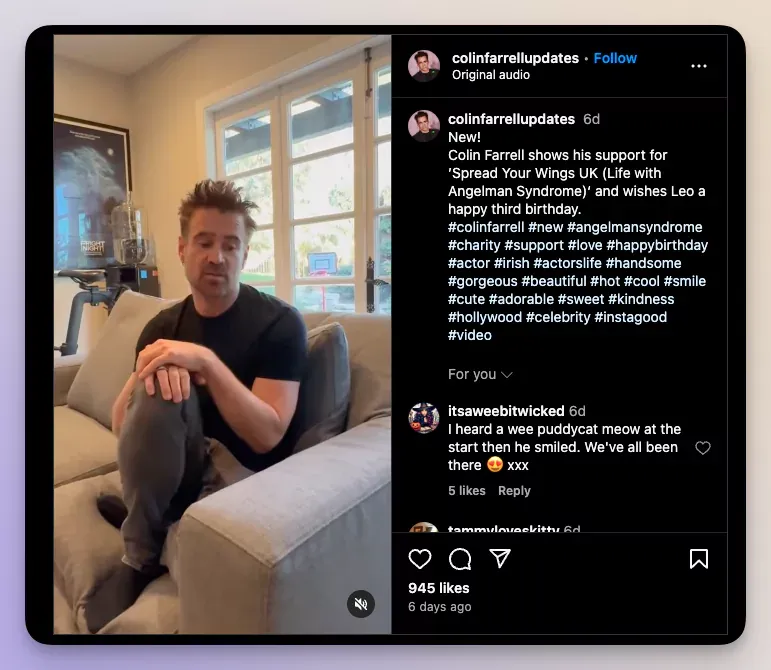
Social media tools for nonprofits
To create a robust social media plan for nonprofits, one needs to be able to rely on a set of dedicated tools, from content creation to content scheduling, social media analytics, and listening tools to online donation platforms.
Now let’s present them separately.
Socialinsider - nonprofits can use this tool for social media analytics and competitor analysis
The insightful analytics and listening tool, Socialinsider offers a comprehensive suite of tools tailored for NGOs, including complete analytics to track performance metrics and a social listening tool to monitor conversations and trends.
And here's the bonus: nonprofit organizations can benefit from a 50% OFF discount on all annul plans, making data-driven decision-making more accessible than ever.
Canva - nonprofits can use this social media tool for design
With its intuitive design tools, templates, and extensive image library, Canva empowers NGOs to craft visually stunning content for their social media campaigns.
From eye-catching graphics to engaging infographics and promotional materials, Canva makes it easy to create captivating visuals for any nonprofit’s social media.
Donorbox - nonprofits can use this tool as a fundraising engine
With Donorbox, NGOs can effortlessly collect online donations, manage donor information, and launch effective fundraising campaigns.
Donorbox is one of the multiple fundraising solutions, alongside Classy, 4fund, Buymeacoffee, GoFundMe, and even PayPal.
Final thoughts
Social media for nonprofits can be tricky only if you want it to be. As with anything else, if you have clear objectives, access to analytic data, and use the right tools, you can create thriving marketing campaigns that supercharge your charity missions.
FAQs about social media for NGOs
1. How to increase social media presence for nonprofits?
When looking to increase your nonprofit’s social media presence, a few things are crucial to be checked.
- Craft compelling content that resonates with your audience and aligns with your organization's mission.
- Engage your followers with meaningful posts, including impactful visuals and storytelling.
- Maintain a regular posting schedule to stay on your audience's radar. Don't forget to leverage hashtags and community engagement to expand your reach.
- Consider collaborating with influencers or other nonprofits to widen your network.
- Analyze your performance metrics using tools like Socialinsider to refine your strategies and optimize your impact.
2. How to use social media for nonprofits
You can start leveraging the power of social media for your charity endeavors by following these simple steps:
- Establish clear goals and objectives for your social media presence: whether it's raising awareness, driving donations, or mobilizing supporters.
- Identify your target audience and tailor your content to resonate with their interests and values.
- Engage your followers through meaningful interactions, like responding to comments, hosting Q&A sessions, or sharing user-generated content.
- Experiment with various features of different social media platforms like Facebook fundraisers, Instagram stories, or Twitter chats.
- Measure your performance using analytics tools to track your progress and refine your strategies over time.
3. Why social media is the best marketing strategy for nonprofits
This is why social media reigns supreme as the ultimate marketing strategy for nonprofits.
- Social media offers impressive reach and accessibility, allowing nonprofits to connect with a global audience instantaneously.
- It allows nonprofits to engage directly with their supporters, donors, and beneficiaries fostering meaningful relationships and building a sense of community around the organization's mission.
- Is cost-effective, making it accessible to nonprofits with limited resources.
- Content on social media has an unmatched shareability potential that can lead to organic growth and virality.







